A History of the County of Buckingham: Volume 4. Originally published by Victoria County History, London, 1927.
This free content was digitised by double rekeying. All rights reserved.
'Parishes : Chilton', in A History of the County of Buckingham: Volume 4, ed. William Page (London, 1927), British History Online https://prod.british-history.ac.uk/vch/bucks/vol4/pp22-27 [accessed 3 May 2025].
'Parishes : Chilton', in A History of the County of Buckingham: Volume 4. Edited by William Page (London, 1927), British History Online, accessed May 3, 2025, https://prod.british-history.ac.uk/vch/bucks/vol4/pp22-27.
"Parishes : Chilton". A History of the County of Buckingham: Volume 4. Ed. William Page (London, 1927), British History Online. Web. 3 May 2025. https://prod.british-history.ac.uk/vch/bucks/vol4/pp22-27.
In this section
CHILTON
Ciltone (xi cent.); Chiltone (xii cent.); Schelton (xiii cent.).
This parish, which lies 3½ miles south-east of Brill, contains 2,067 acres. About 404 of these are arable, 19 woodland and the rest laid down in permanent grass, (fn. 1) the soil being loam and clay on a subsoil of Kimmeridge Clay. Most of the parish is rather over 300 ft. above the ordnance datum, but a central ridge rises to 450 ft. The village lies on the road from Long Crendon and contains several brick and timber houses of the 16th and 17th centuries. The vicarage, though cased with later brick, is of the latter date, while the post office is probably of mediaeval origin. All, however, have been much altered and added to in later times. Chilton Park Farm, in the north-west corner of the parish and about 1½ miles from the village, is an interesting example of a late 16th-century house, much altered, but retaining several original features. This is 'the lodge in the park of Chilton' of 1607. (fn. 2)
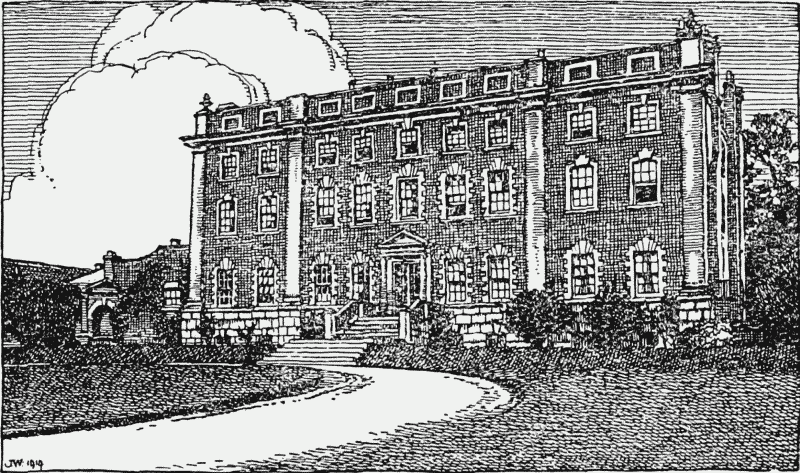
Chilton House
Chilton House, which stands to the east of the church, is a rectangular building of red brick with stone dressings, three stories in height, with an attic. Though it was practically rebuilt in 1740, remains of the house erected here in the 16th century survive in the north and south fronts and the cellars. The plan seems to have been originally shaped with the wings projecting westward, but the space between the wings was inclosed in 1740 when the east and west fronts were rebuilt. There is an original fourcentred doorway on the south front with a contemporary four-light window above it, and on the north front, besides traces of blocked windows, there are two old chimney stacks of brick surmounted by diagonal shafts. There is an early 17th-century moulded fireplace in one room on the first floor, and three other rooms have reused panelling of the same period, while on the second floor is a long room with re-used 16th-century linenfold panelling. The cellars which lie under the original main block are barrel-vaulted in brick and have small side recesses. In the walls of the north garden are four stone doorways, two of the 16th and two of the 17th century.
Chilton Congregational chapel dates from 1887. The modern names of Chilton Grove and Hornage Farm recall 'Le Grove' of 1316 (fn. 3) and 'Harnage' of 1607 (fn. 4) and probably mark the site of the farms bought by the Deloraine family in the reign of Queen Anne. (fn. 5) About 1544 140 acres of waste called Fyppenhoe or Phippenhoo were inclosed by John Croke with the consent of the lords and tenants of Brill and Dorton who had right of pasture there, (fn. 6) and were known henceforward as Chilton Park. (fn. 7) Place-names of the 14th century are Le Grascrofte and Leverecheshanger, (fn. 8) of the 17th Wor land, Beanyfield or Benyfields and Duas Lawnes. (fn. 9)
Manors
The manor of CHILTON, which Alric, son of Goding, a king's thegn, had held before the Conquest, belonged to Walter Giffard in 1086. (fn. 10) As parcel of the honour of Giffard (fn. 11) it came to William Marshal, Earl of Pembroke, by his marriage with Isabel de Clare. (fn. 12)
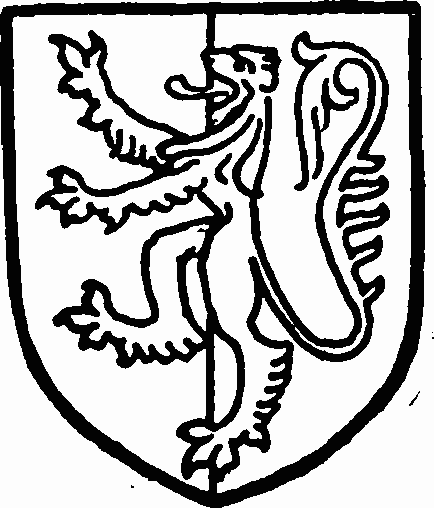
Marshal. Party or and vert a lion gules.
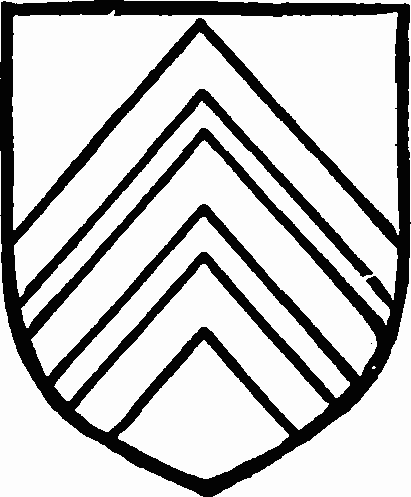
Clare. Or three theverons gules.
After the death of Anselm, the last Earl of Pembroke of this house, his rights here descended to his sisters Isabel and Joan. (fn. 13) Gilbert de Clare, Earl of Gloucester, Isabel's grandson, (fn. 14) entered the chief manor of Chilton, presumably as overlord, on the death of the sub-tenant in 1272, (fn. 15) and it was held of his son and heir of the same name in 1314 (fn. 16) and of Hugh Audley, Earl of Gloucester, in 1347. (fn. 17) From 1387 to 1399, however, at least some part was held of the Earls of Stafford. (fn. 18) In 1265, 1284, 1302, and 1323 the overlordship was ascribed to the Crown, (fn. 19) of which this manor was held by the service of onetwentieth of a knight's fee from 1488 to 1640. (fn. 20)
William de Valence, husband of Anselm Marshal's niece Joan, (fn. 21) seems to have been overlord of a half-fee in Chilton at the end of the 13th century, (fn. 22) as was his son Aymer in 1302 (fn. 23) and 1324, (fn. 24) his great-greatgrandson Richard Talbot in 1397. (fn. 25) Eleanor de Lucy, mesne lord here in 1284, (fn. 26) was followed in the 14th century by Adam and John Fitz Piers and their heirs successively. (fn. 27)
No record of the subinfeudation of Chilton before the 13th century survives. It was in the hands of Walter Giffard himself in 1086, (fn. 28) in the keeping of the guardian of the honour of Giffard a hundred years later. (fn. 29) In the reign of Henry III the subtenant was Robert Grenville, (fn. 30) under whom Walter de Burgh held in 1236 and 1237. (fn. 31) Robert's tenure had ceased by 1244, when the king gave his possessions in Chilton to Paul Pever as escheat of the lands of the Normans. (fn. 32) In 1247 Paul's holding was further augmented by a gift of land here, similarly forfeited, which had belonged to Eustace Grenville. (fn. 33) Paul died in 1251, (fn. 34) when his widow Joan sold the marriage of their son Paul to John de Grey, who married him to his daughter. (fn. 35) Shortly afterwards Joan made a runaway match with John de Grey to avoid marriage with a foreigner, Stephen de Salines, the king's choice. (fn. 36) The younger Paul Pever evidently died without issue before his mother Joan's death in 1256, when the custody of the heir, his brother John, was given to Master Peter Pever. (fn. 37) In 1261 this John son of Paul Pever was in possession of his inheritance (fn. 38) and died before Michaelmas 1267, when the custody of his lands was committed to the queen. (fn. 39) Emma, the widow, survived until 1272, when their son John was still a minor. (fn. 40) He afterwards acquired part of Marsworth Manor (q.v.), with which Chilton descended until 1429, when at the death of Thomas Pever it passed to Alice daughter of his daughter Mary by her second husband Richard Lord St. Maur and wife of William Lord Zouche. (fn. 41) A year after her maternal grandfather's death, when his heir, her step-brother John Broughton, was twenty-two, (fn. 42) a release was granted to her and her husband by John Pever of Chilton and other Buckinghamshire manors formerly of Thomas Pever. (fn. 43) As no other mention of this John Pever occurs, it is possible that John Broughton had assumed his grand As no other mention of this John Pever occurs, it is possible that John Broughton had assumed his grandfather's surname. He bore his father's, however, in a suit of 1434 touching land in Cornwall. (fn. 44) From William and Alice Zouche, Chilton descended to their son, another William Zouche. (fn. 45) He died in 1468, leaving a son John, aged eight, (fn. 46) and Katherine his widow held Chilton in dower with a second husband Sir Gilbert Debenham. (fn. 47) John Zouche was lord in 1485, when he fought at Bosworth on the side of Richard III, (fn. 48) and the manor was granted two years later to Sir John Risley, who had enjoyed the profits since the battle. (fn. 49) It was probably restored on the reversal of his attainder in 1495 to Lord Zouche, (fn. 50) whose son and heir, another John Lord Zouche, sold it in 1529 to John Croke, (fn. 51) or Le Blount, one of the six clerks, and afterwards a master, in Chancery. (fn. 52) From this lawyer, lord in 1535, (fn. 53) Chilton descended to his son and heir Sir John Croke, who held his first court in 1554 after his father's death, (fn. 54) and died seised in February 1608–9. (fn. 55) His eldest son and heir of the same name, then a judge of the King's Bench, (fn. 56) settled the manor the same year, when his son John married Rachel daughter of Sir William Webb, on himself, after the death of his mother, Dame Elizabeth Croke, with successive remainders to his wife Katherine and John and Rachel. (fn. 57) He was seised at his death in January 1619–20, when Chilton descended to his son and heir the third Sir John Croke, (fn. 58) lord until 1640. (fn. 59) In 1642 his son and heir, another John Croke, was created a baronet by Charles I, (fn. 60) for whose service he had raised a troop. (fn. 61) The greater part of his inheritance, already impaired by the expenses of office incurred by his grandfather the judge (fn. 62) and further diminished by his loyalty, (fn. 63) was given up to his creditors a few years after the Restoration and his manor leased by the Crown to one of their number, Mrs. Ann Andrews. (fn. 64) In 1667 the false accusation of robbery brought by Sir John against Robert Hawkins, vicar of Chilton, completed his ruin. (fn. 65) The sales or mortgages of the park and small holdings in lands and tithes begun by his father were continued by himself and his son, (fn. 66) and he died a prisoner in the Fleet, March 1678–9. (fn. 67) He left the manor, manor-house, and park of Chilton to his daughter Margaret Hyde for the payment of his debts, (fn. 68) but his son and heir Sir Dodsworth Croke, bart., disputed the will in 1682. (fn. 69) In 1695 Jane Mathew, widow, conveyed to John Limbrey her right in the manor of Chilton, (fn. 70) which is said to have passed from Richard Limbrey to Edward Hervey six years later. (fn. 71) Another Edward Hervey in 1739 conveyed his rights here to Sir John Aubrey and Thomas Blackall, (fn. 72) who were probably acting on behalf of Richard Carter, (fn. 73) with whom both were connected by marriage. (fn. 74) On Richard's death in 1755 his estates descended to his son George Richard Carter. (fn. 75) He died in 1771, leaving two daughters and co-heirs, (fn. 76) the survivor of whom, Martha Catherine, brought Chilton to her husband John, afterwards Sir John, Aubrey, (fn. 77) On her death without issue Sir John is said to have given this manor to the Hon. Henry Grey Bennet, son of Earl Tankerville by Emma sister of Sir John's first wife Mary Colebrooke, (fn. 78) with remainder to Mrs. Ricketts. (fn. 79) Chilton has since followed the descent of Boarstall (q.v.), and Mr. Henry L. Aubrey-Fletcher is now lord of the manor.
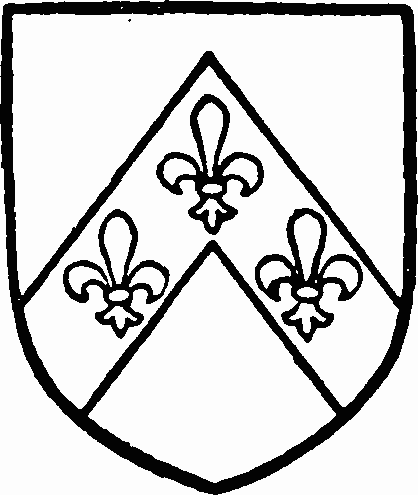
Pever. Argent a cheveron gules with three fleurs de lis or thereon.
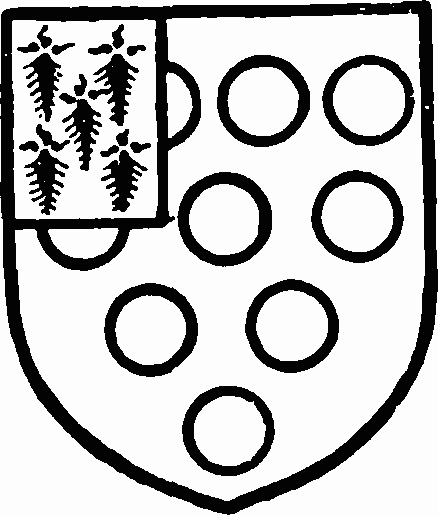
Zouche. Gules bezanty with a quarter ermine.
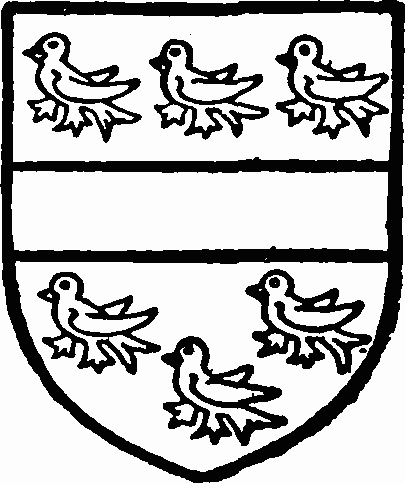
Croke. Gules a fesse between six martlets argent.
A dovecote which belonged to the manor in 1626 (fn. 80) had been succeeded by two dove-houses by 1739, when there was also a malt-house here. (fn. 81) View of frankpledge, an appurtenance from 1609 to 1640 with free warren, (fn. 82) in 1785 mentioned alone, (fn. 83) was held in this manor about 1547 of the king as parcel of the honour of Gloucester. (fn. 84)
Half a knight's fee in Chilton, probably once part of the undivided Grenville manor, (fn. 85) was in the possession of William Grenville in 1255, (fn. 86) of his son John (fn. 87) in 1284, 1301, and 1302, (fn. 88) and came afterwards to Sir Reginald Hampden through his marriage with Nichola, one of John's daughters and co-heirs. (fn. 89) From that date until 1553 it descended with the manor of Great Hampden (fn. 90) (q.v.). On the death of John Hampden in 1553 Chilton passed to his granddaughter Anne, wife of William Pawlet. In 1608 her granddaughter Elizabeth, and her husband, Oliver St. John, conveyed their rights in Chilton and Easington to Sir John Croke and other members of his family. (fn. 91) As no later mention of this manor occurs in public records it is probable that it was afterwards merged in the chief manor of Chilton.
Land in Chilton given in the 13th century to the abbey of Nutley (fn. 92) was the nucleus of the manor owned here by that house in 1535. (fn. 93) In 1542 this was granted under the title of CANNON FARM or CANNON COURT to John Croke, (fn. 94) who had begged Cromwell's mediation with the king in the matter three years before. (fn. 95) Having passed through various hands after the breaking up of the Croke estates it was finally purchased by Sir John Aubrey. (fn. 96)
EASINGTON (Hesintone, Essintone, Easyngdon), a manor which Alric, son of Goding, held before the Conquest, belonged to Walter Giffard in 1086, when it was assessed at 5 hides. (fn. 97) It was held of the Crown in chief until 1590, (fn. 98) from 1387 to 1523 as of the honour of Gloucester. (fn. 99)
Like Chilton (q.v.), Easington, of which Roger was sub-tenant in 1086, (fn. 100) came from the Giffards to the Marshals and from the Marshals to the Clares. (fn. 101) It does not seem to have been permanently subinfeudated by either family. Geoffrey de St. Martin held it of William Marshal in the reign of Henry III. (fn. 102) Gilbert de Clare, Earl of Gloucester, lord in 1284 and 1302, (fn. 103) granted Easington to Ralph de Badlesmere for life, and on Ralph's death, Joan, Gilbert's widow, gave a life interest in the manor to her husband's brother Guy, who died seised. (fn. 104) By her son Gilbert, (fn. 105) the last Earl of Gloucester of the house of Clare, who succeeded his mother in 1307, (fn. 106) Easington was settled in 1313 on Gilbert de St. Owen and his wife Joan, with reversion to himself should they die without issue. (fn. 107) In 1316 Joan was seised alone. (fn. 108) She seems afterwards to have married Nicholas de la Beche, who with his wife Joan, in 1318, called on the sisters and heirs of Earl Gilbert with their husbands, Hugh le Despencer the younger, Hugh Audley, and Roger Dammory, to warrant their possession of Easington against Maud, Gilbert's widow, who claimed a third of the manor in dower. (fn. 109) In 1346 Hugh Audley held Easington, (fn. 110) which came on his death, the next year, to his daughter Margaret and her husband Ralph Lord Stafford. (fn. 111) Ralph, who obtained licence in 1350 to make a life grant of the manor to Edmund Mortayn, clerk, (fn. 112) was succeeded, since his eldest son was dead, by his second son Hugh. (fn. 113) He died seised in 1386, (fn. 114) and his title and lands descended to his son Thomas, after whose death in 1392 (fn. 115) one-third of Easington was granted to his widow Anne, while the custody of the rest of the estate was given to Thomas, Duke of Gloucester, until William Stafford, his brother and heir, should come of age. (fn. 116) William Stafford was succeeded at his death in 1395 by his brother Edmund (fn. 117) who died in 1403, leaving an infant son and heir Humphrey, (fn. 118) Duke of Buckingham from 1444 until his death in 1460 on the battlefield of Northampton. (fn. 119) His grandson Henry Duke of Buckingham was executed by Richard III in 1483, (fn. 120) when Easington was granted to Christopher Wellesbourne for life. (fn. 121)
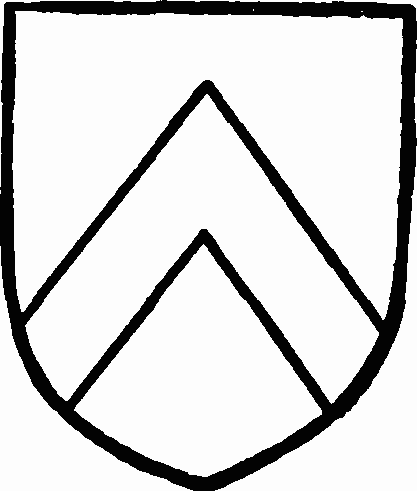
Stafford. Or a cheveron gules.
On the reversal of the duke's attainder the manor was restored to his son Edward Duke of Buckingham, (fn. 122) in possession in 1505. (fn. 123) He was beheaded in 1521, (fn. 124) and Easington was granted to Sir Henry Marney, who was already enjoying the profits, in the following year, (fn. 125) and he died seised in 1523. (fn. 126) At the death without male issue of his son and heir John Lord Marney, in 1525, (fn. 127) Easington reverted to the Crown and was granted to William Cary in 1526. (fn. 128) He was succeeded in 1528 by his son and heir Henry, (fn. 129) who completed his sale of the manor to John Croke, lord of Chilton Manor, and his wife Prudence, in 1553. (fn. 130) John Croke was seised at his death the following year. (fn. 131) In 1587 his son and heir Sir John settled Easington on himself for life with remainders to his wife Elizabeth and their eldest son John. (fn. 132) This settlement was followed four years later by the sale of the manor by the younger John to his brother George, (fn. 133) to whom he conveyed it again in 1601. (fn. 134) Sir George disregarded his brother's request to allow his son and heir to redeem Easington, (fn. 135) and his widow, Mary, to whom he left the manor for life, (fn. 136) conveyed it to their son Thomas in 1646. (fn. 137) She appears, however, to have been in possession when she died in 1657, (fn. 138) possibly having survived Thomas, who is said to have left no issue. (fn. 139) The manor seems to have then descended to the daughters of Sir George Croke. (fn. 140) In 1686 it was sold by Richard Sherrard, Sir John and William Brownlow, and the daughters and heirs of John Green, Alice widow of Francis Johnson, Sybil wife of Adrian Gamlyn, and Jane Green, to Thomas Parsons. (fn. 141) Margaret, widow of Thomas, held in 1709. (fn. 142)
Forty years later Samuel Horne bought Easington of Gilbert Jackson and his wife Elizabeth, the younger Gilbert Jackson, and Richard Nevill Aldworth. (fn. 143) His son and heir, Edward Horne, sold the manor to John Aubrey in 1782, (fn. 144) and it has descended with Chilton (q.v.) from that time, Mr. Henry L. Aubrey-Fletcher being now lord.
There was a capital messuage in Easington in 1307. (fn. 145) View of frankpledge, which, with assize of bread and ale, formed part of the grant to William Cary, (fn. 146) was an appurtenance of the manor in 1387. (fn. 147)
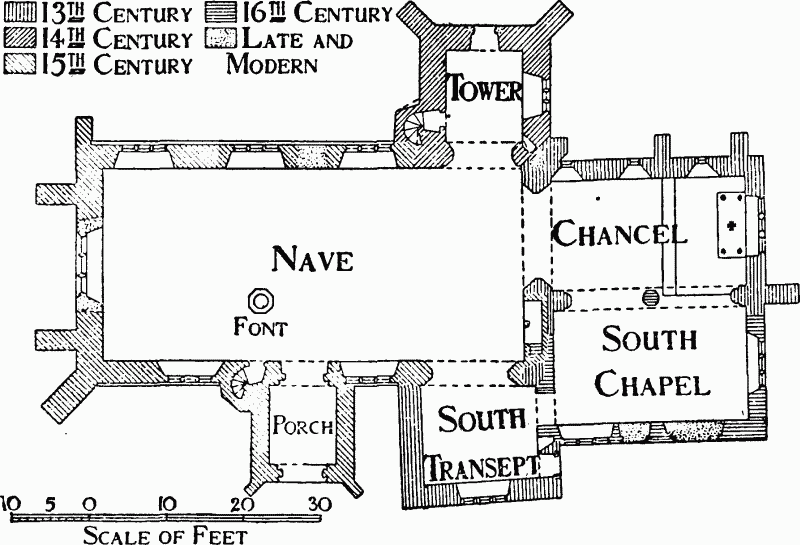
Plan of Chilton Church
(
Adapted from the Inventory of the Historical Monuments of Buckinghamshire with the permission of the Royal Commission and the consent of the Controller of H.M. Stationery Office)
Church
The church of ST. MARY THE VIRGIN consists of a chancel measuring internally 25 ft. 6 in. by 14 ft., south chapel 25 ft. 6 in. by 15 ft., nave 54 ft. 6 in. by 25 ft. 6 in., north tower 12 ft. by 10 ft., south transept 15 ft. 6 in. by 13 ft., and a south porch. It is built of rubble and roofed with lead and tiles.
The north and east walls of the nave may be built on parts of the foundations of a 12th-century church, but the only detail of this period now surviving is a fragment reset in the south transept doorway. The chancel and south transept date from the late 13th century, and a south chapel erected at the same period was rebuilt about 1520. The tower dates from about 1350, and the porch was added in the 15th century when the nave was widened on the south side and practically rebuilt, perhaps incorporating a south aisle. The whole fabric was restored in 1907.
The chancel has a three-light, pointed window in the east wall and three lancets in the north wall, all dating from the late 13th century. On the south side is a 16th-century arcade of two four-centred arches with a central octagonal column; this has replaced a 13th-century arcade, the responds of which have been retained with the original bases and one original capital. In the north wall is a plain locker. The pointed chancel arch dates from about 1280, but seems to have been rebuilt in the 15th century when the bases of the responds were renewed. The highpitched chancel roof, though much repaired, probably dates from the 15th century. The chapel is lighted by two windows, one in the east wall and one in the south wall, each of three cinquefoiled lights under a four-centred head, while a similar window and a doorway in the south wall are now blocked; in the west wall is a semicircular arch to the transept. Some fragments of 16th-century glass remain in the east window.
The nave has three traceried windows in the north wall and two in the south wall, all of three lights and dating from about 1480; a modern window has replaced one of the same period in the west wall, traces of which can be seen on either side. The north and south doorways, the former now blocked, are also of the late 15th century, as is a small doorway beside the latter admitting to the parvise stair; the south doorway has a pointed head and moulded jambs, and below the west window are traces of another doorway, now blocked. On the east side of the south doorway is a square-headed stoup. Opening into the tower at the east end of the north wall is a 14th-century pointed arch of three orders, and opposite to it on the south another pointed arch of about 1480, with responds having moulded capitals and bases, opens into the south transept. At the south-east of the nave is a 15th-century rood-loft stairway with the original upper and lower doorways. Adjoining the lower doorway on the north, and communicating with the stairway, is a contemporary arched recess which may have been constructed for the pulpit. The lowpitched nave roof probably dates from about 1580, but has been considerably repaired; on the wall above the chancel arch can be seen the lines of an earlier roof of high pitch.
In the east wall of the south transept are a partly blocked 13th-century rancet and a small doorway in which some 12th-century work has been re-used. The window in the south wall, of three pointed lights with internal jamb shafts, probably dates from the 13th century. The tower is of two stages with diagonal buttresses on the north, a stair-turret at the southwest, and a plain parapet. The lower stage has a three-light traceried window on the east and one of two trefoiled lights on the north, both of about 1350, while below the latter is a doorway now covered with cement. The walls of the bell-chamber are pierced by small trefoiled lights. The south porch has a barrel vault divided by moulded ribs into five traceried compartments, and is entered through a richly-moulded archway flanked by diagonal buttresses. The parvise above the porch, approached by a stair-turret on the north-west, has a two-light window over the archway, and is surmounted by a plain parapet. The turret doorway retains an original traceried door.
The font is of the 15th century, and has an octa gonal bowl on a moulded round stem and base. Incorporated in the quire stalls are two 16th-century bench-ends with poppy-heads and some traceried panels from a screen of the same period. Between the chancel and chapel is a 16th-century traceried screen, the uprights of which have been replaced by 17th-century balusters. On the east wall of the nave is a 17th-century wrought-iron hour-glass stand, and on a bracket in the chapel is a funeral helm of about 1500. There are some old encaustic tiles on the tower floor, while below the floor of the transept are some stone slabs which are probably mediaeval coffin lids.
In the south chapel are brass inscriptions to John Croke 'the ealder,' master in Chancery, who died in 1554, with a shield of Croke quartering Haynes; to Sir John Croke, judge of the King's Bench, who died in 1619; and to Edward Croke, who died in 1626, with a shield of Croke. Against the south wall of the chapel, surrounded by an iron railing, is an elaborate marble monument to Sir John Croke, who died in 1608, and his wife Elizabeth (Unton), who died in 1611, with their recumbent effigies, the knight wearing the armour of the period. They lie upon a rectangular tomb in a round-headed recess flanked by Corinthian columns supporting an entablature and pediment, and below are the kneeling figures of eight sons and three daughters. Above the kneeling figures are the shields of Croke and its alliances, and a shield over the pediment has the Croke crest, two swans' heads coming out of a crescent and holding a ring in their beaks. In the south transept is a marble monument to Elizabeth (Croke), wife of Sir John Tyrell of Heron, who died in 1631. Her kneeling figure with a chrisom child is placed in a recess flanked by Ionic columns with a pediment above. In the chancel is a floor slab to Jane (Tryon), wife of John Croke, who died in 1636. There are also 18th-century monuments to the Carter family, besides later memorials to members of the Croke family. Outside in the east gable of the nave is set a cross-legged effigy of a knight of about 1280 in chain mail and long surcoat.
The tower contains a ring of three bells, all by Richard Keene, 1686, and a sanctus, which is probably by the same maker though it has no inscription.
The communion plate includes a chalice and cover of 1569, the latter being inscribed 'Chilton 1570.'
The registers begin in 1730.
Advowson
The church was granted by Walter Giffard to the abbey of Nutley and remained in its possession until the Dissolution, (fn. 148) when the church came to the Crown. It was granted by Henry VIII in 1542 to Christ Church Cathedral, Oxford. (fn. 149) Five years later the church of Chilton with the tithes of Easington came to Sir Anthony Lee and John Croke, the latter of whom was already tenant. (fn. 150) It has descended with the manor (q.v.) from that time. (fn. 151)
Half an acre of land given to find a lamp in this church and included in 1574 in a grant to Christopher Fenton and Bernard Gilpin seems to have lain in Dorton parish. (fn. 152)
Charities
In 1628 Nicholas Almond by deed conveyed to trustees a messuage with the appurtenances situate in the High Street of New Thame, Oxfordshire, upon trust to apply the rents for the benefit of the poor. The property is let at £35 a year, which is distributed in coal.
John Hart, by his will proved in the P.C.C., 15 May 1665, devised (inter alia) an annual rentcharge of £3 issuing out of the manor of Easington, Oxfordshire, for binding apprentice one poor boy. (fn. 153) The annuity (less land tax) is applied as occasion arises.
For the charity of Charles Aubrey Aubrey for keeping in repair the school buildings in this parish and Boarstall, see under the parish of Boarstall.
The Clerk's Close, the origin being unknown, consists of a furlong called Mill Way in a close containing 25 acres, in respect of which 10s. a year is paid to the clerk.
This parish has a share in the Studley Almshouses' Charity in Beckley, Oxfordshire, founded about 1640 by Sir George Croke. The charity is regulated by a scheme of the Charity Commissioners, 23 January 1880, whereby £20 a year is paid to the officiating minister at Horton (Oxon.), £10 to the vicar of Chilton and the residue of the net income for the benefit of the almshouses. The number of inmates is fixed at four; where of two are men not less than sixty years of age and two are women not under fifty years. They are selected from Chilton, Waterstock or Beckley, or some place within six miles of the almshouses.